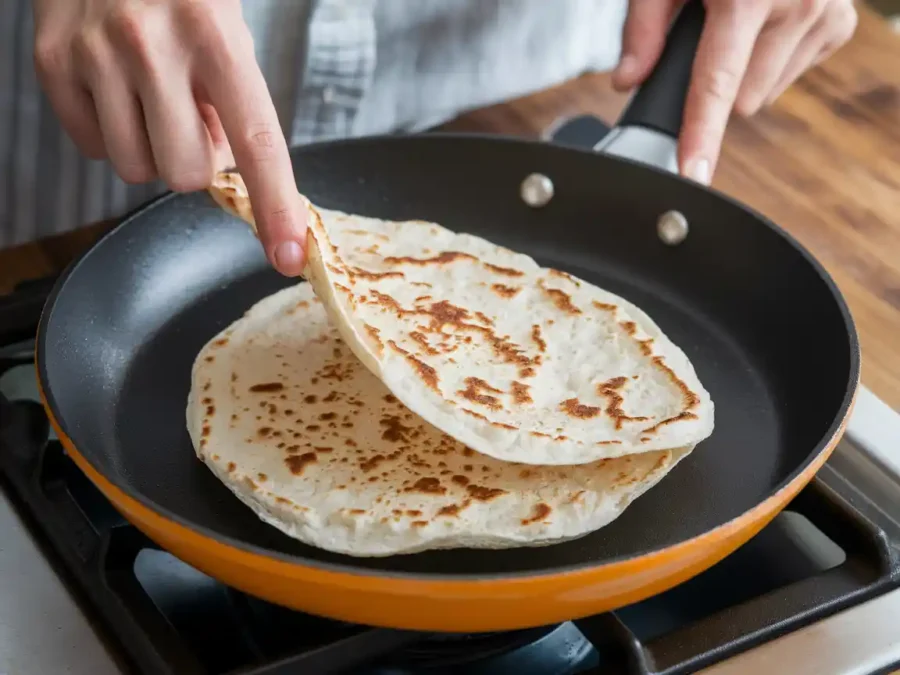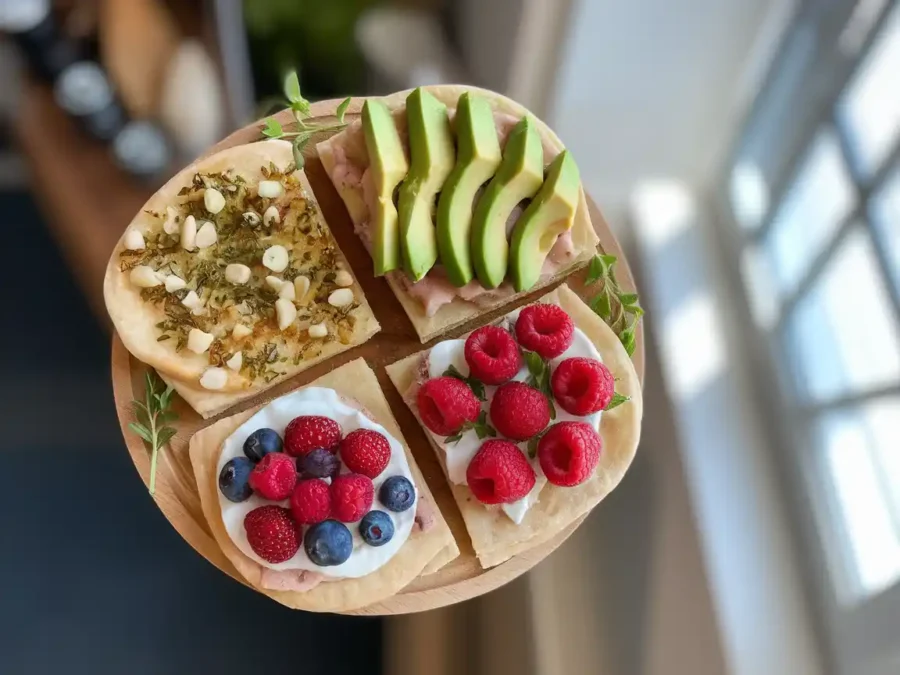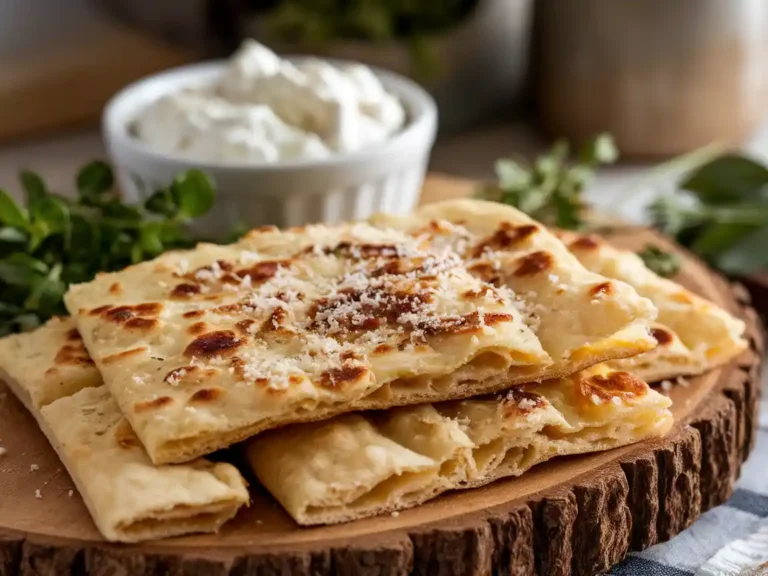When done right, cottage cheese flatbread is a delightful, high-protein treat that can be enjoyed sweet or savory. However, one of the most common challenges people face while making this dish is dealing with a soggy texture. If you’ve ever wondered, “Why is my cottage cheese flatbread soggy?”, you’re not alone! This article will uncover the root causes of sogginess, explore factors that impact texture, and provide actionable tips to fix and prevent this issue. Let’s dive into the details and get your flatbread game back on track.
Table of Contents
Understanding Why Cottage Cheese Flatbread Becomes Soggy
Cottage cheese flatbread can sometimes turn out less than perfect, and sogginess is often the main culprit. To understand how to fix it, we first need to explore the causes behind this common problem.
The Role of Moisture in Cottage Cheese
Cottage cheese is the hero of this recipe, but its high moisture content can also be its downfall. Unlike aged cheeses, cottage cheese has a significant amount of liquid whey. This can seep into your dough, creating a sticky mess that results in a soggy flatbread.
Draining the cottage cheese before using it can help reduce the liquid content. Simply place it in a fine mesh strainer or cheesecloth and let it sit for a few minutes. This small step can drastically improve the texture of your flatbread.
Common Mistakes When Preparing the Dough
Another common cause of soggy cottage cheese flatbread lies in how the dough is prepared. Overmixing the dough can activate the gluten in flour, making it too elastic and trapping excess moisture. Additionally, using too much cottage cheese relative to the flour can throw off the balance, leaving you with a wet and unworkable dough.
It’s essential to measure your ingredients carefully and mix the dough gently. Stick to the recommended ratios, and when in doubt, err on the side of slightly less cottage cheese to keep the dough manageable.
Key Factors That Impact the Texture of Cottage Cheese Flatbread
Understanding the factors that influence the texture of your cottage cheese flatbread is crucial for avoiding sogginess. From ingredient ratios to cooking techniques, each step in the process plays a significant role.
Ingredient Ratios and Their Effect on Consistency
One of the most common answers to “Why is my cottage cheese flatbread soggy?” lies in the ratio of wet to dry ingredients. If there’s too much cottage cheese relative to the flour, the dough may struggle to hold its shape, leading to a wet and soggy texture.
- The Cottage Cheese Factor: Cottage cheese has a high moisture content. Opting for thicker varieties or draining the cheese can help reduce excess liquid.
- Flour Variations: Whole wheat flour or almond flour absorbs moisture differently. If you’re experimenting with alternative flours, adjust the quantity to ensure the dough achieves the right consistency.
Additionally, adding too much baking powder can create air pockets, making the flatbread uneven and prone to collapsing. Stick to the recipe’s recommended measurements for a balanced result.
Cooking Techniques and Heat Management
The way you cook your flatbread greatly affects its texture. Insufficient heat can cause the flatbread to cook unevenly, leaving the middle soft and underdone. On the other hand, cooking on too high a heat can result in a burnt exterior with an uncooked interior.
- Preheating Matters: Always preheat your skillet or oven. Starting with an evenly heated surface ensures the flatbread cooks uniformly.
- Thickness Control: Rolling the dough too thick can also prevent even cooking. Aim for a uniform thickness of about ¼ inch for the best results.
By mastering these techniques, you can significantly improve the texture of your flatbread and avoid sogginess altogether.
Troubleshooting Soggy Cottage Cheese Flatbread
No one wants to spend time making flatbread only for it to turn out soggy. Thankfully, there are simple fixes and preventative measures to ensure a better outcome.
Adjusting the Recipe for Better Texture
If you’ve encountered sogginess in previous attempts, adjusting the recipe can make all the difference. Consider the following tweaks:
- Drain the Cottage Cheese: Use a fine mesh strainer or cheesecloth to remove excess moisture before adding it to the dough.
- Add More Flour Gradually: If the dough feels too sticky, gradually incorporate more flour until it becomes manageable but not overly dry.
- Use Baking Parchment: When baking, place the dough on parchment paper to prevent it from absorbing extra moisture from the pan or oven tray.
Preventing Sogginess in Future Batches
Prevention is always better than cure. To ensure consistent results, keep these tips in mind:
- Avoid Overloading Toppings: Too many wet ingredients, like tomato slices or cream-based sauces, can contribute to sogginess. Use toppings sparingly or pat them dry beforehand.
- Cook in Batches: Overcrowding the skillet can lower the temperature, causing the flatbread to steam rather than crisp. Cook in smaller batches for better control.
Alternative Methods to Improve Cottage Cheese Flatbread
When sogginess is a recurring issue, trying alternative methods can elevate your flatbread’s texture while keeping its signature flavor intact. Let’s explore some modifications to make your cottage cheese flatbread even better.
Using Substitutes for Moist Cottage Cheese
If you find cottage cheese too wet for your recipe, there are substitutes that can offer similar benefits without the excess moisture.
- Ricotta Cheese: Ricotta has a smoother texture and slightly less moisture than cottage cheese. It can be used as a direct substitute, though you may need to adjust the flour slightly to achieve the ideal consistency.
- Greek Yogurt: Thick Greek yogurt is another excellent alternative. Its creamy consistency can mimic cottage cheese’s effect in the dough while contributing less water.
- Paneer or Farmer’s Cheese: These cheeses are drier and can be crumbled into the dough for a unique take on flatbread.
Each substitute offers a slightly different flavor and texture, so feel free to experiment to find your favorite.
Modifying the Recipe for Different Dietary Preferences
Cottage cheese flatbread is already versatile, but small tweaks can make it fit even more dietary needs.
- Low-Carb Option: Swap regular flour for almond or coconut flour to create a low-carb version. These flours absorb more moisture, which helps reduce sogginess while keeping the flatbread keto-friendly.
- Gluten-Free Alternative: Use gluten-free flour blends designed for baking. These blends often include xanthan gum or similar ingredients to help bind the dough.
These adjustments ensure that everyone, regardless of their diet, can enjoy this protein-packed flatbread without compromising on quality or taste.
Preventing Sogginess with Cooking Techniques
If you’ve struggled with sogginess, adjusting your cooking methods can make a huge difference. Proper heat management, preparation, and handling are key to avoiding the dreaded question: “Why is my cottage cheese flatbread soggy?”
Using the Right Cooking Equipment
The tools you use for cooking flatbread significantly impact its texture. Certain equipment ensures even heat distribution and helps reduce excess moisture.
- Non-Stick Skillet: Using a non-stick skillet with even heat distribution is crucial. Preheat the pan to medium heat before adding the flatbread to prevent steaming and sogginess.
- Oven Baking: If you prefer baking, use a preheated oven and a baking stone or steel for a crispier result. These surfaces absorb heat and distribute it evenly, eliminating soft or wet spots.
- Air Fryer Option: For a modern twist, air fryers provide an excellent alternative. The circulating heat cooks the flatbread evenly, resulting in a crisp outer layer without added oil.

Mastering the Cooking Process
Beyond the tools, how you cook cottage cheese flatbread plays a pivotal role in its texture.
- Avoid Overcrowding: Cooking multiple flatbreads at once can trap steam, leading to a soggy surface. Instead, cook one or two at a time for better results.
- Flip Strategically: Flipping the flatbread only once during cooking allows each side to develop a golden crust without losing too much heat. Frequent flipping can interrupt the cooking process and trap moisture.
Mastering these techniques can transform your flatbread-making experience and help you avoid soggy results.
Enhancing Flavor and Presentation
Once you’ve solved the issue of sogginess, it’s time to focus on enhancing the flavor and presentation of your cottage cheese flatbread. After all, a visually appealing and flavorful dish elevates any meal.
Pairing Toppings for Maximum Flavor
Adding the right toppings can turn a simple flatbread into a meal masterpiece. Whether you prefer sweet or savory, the possibilities are endless.
- Savory Ideas: Top your flatbread with smoked salmon, avocado slices, or scrambled eggs for a satisfying breakfast. Drizzle with olive oil and sprinkle fresh herbs for a Mediterranean vibe.
- Sweet Options: For a sweeter take, spread Greek yogurt, drizzle honey, and add fresh berries. A sprinkle of cinnamon or nuts can provide extra texture and flavor.
Serving Suggestions and Presentation Tips
The way you serve your flatbread makes all the difference when impressing guests or simply treating yourself.
- Cutting for Sharing: Slice the flatbread into small wedges or strips for easy sharing. This is perfect for parties or family meals.
- Plating with Sides: Pair your flatbread with a simple salad, a bowl of soup, or roasted vegetables to create a balanced and complete dish.
Learning from Common Mistakes
When attempting to perfect cottage cheese flatbread, it’s important to understand and learn from common errors. By avoiding these pitfalls, you can consistently create a delicious, non-soggy flatbread that meets your expectations.
Skipping the Pre-Drain Step
One of the most overlooked steps in preparing cottage cheese flatbread is draining the cottage cheese. This step is critical to addressing the common question: “Why is my cottage cheese flatbread soggy?” The high moisture content of cottage cheese can overwhelm the dough, leading to an uneven and overly soft texture.
To avoid this, always drain your cottage cheese using a fine mesh strainer or cheesecloth. If you’re short on time, pressing it gently with a spoon can remove excess liquid efficiently.
Overworking the Dough
Overworking the dough is another frequent issue. Kneading too much can activate gluten (in regular flour), making the dough too stretchy and trapping moisture. This results in a dense, wet flatbread rather than the light, airy one you’re aiming for.
To prevent this, mix the ingredients just until combined. The dough should be slightly sticky but not overly wet or elastic. Handle it with care to maintain the right consistency.
FAQs About Cottage Cheese Flatbread
How Long Does the Cottage Cheese Flatbread Last?
Cottage cheese flatbread is best enjoyed fresh, but if you have leftovers, they can be stored for up to 3 days in the fridge. To keep the flatbread from becoming too soft, wrap it tightly in plastic wrap or an airtight container. When reheating, use an oven or skillet to restore its texture microwaving may make it soggy again.
Does Cottage Cheese Melt Like Cheese?
Cottage cheese doesn’t melt like aged cheeses such as cheddar or mozzarella. Instead, it softens and blends into dishes, giving them a creamy texture. In flatbreads, this characteristic ensures that it integrates smoothly into the dough without overpowering other ingredients.
Why Is Cottage Cheese Not Keto?
Cottage cheese can be part of a keto diet, but it depends on the brand and portion size. Some cottage cheeses have added sugars, which increase the carb count. Always choose full-fat, plain varieties with minimal ingredients to keep your flatbread keto-friendly. For a stricter low-carb option, consider substituting with almond or coconut flour.
Can I Use Regular Cheese Instead of Cottage Cheese?
Absolutely! Regular cheeses like shredded mozzarella or cheddar can be used in place of cottage cheese, though the flatbread’s texture will change. These cheeses melt differently, creating a denser and slightly less fluffy flatbread. If you prefer a stretchy, cheesy bite, this swap could be an excellent choice.
Perfecting Your Cottage Cheese Flatbread
Once you’ve mastered the techniques to prevent sogginess, it’s time to elevate your cottage cheese flatbread by fine-tuning your approach and experimenting with flavors.
Experimenting with Alternative Ingredients
While cottage cheese is the star of this recipe, experimenting with alternative ingredients can open new doors.
- Flour Variations: Whole wheat flour adds a nutty flavor, while almond flour creates a low-carb option with a hint of sweetness.
- Flavor Enhancers: Mixing garlic powder, fresh herbs, or spices like cumin into the dough can boost the flavor profile.
This experimentation not only diversifies your flatbread recipes but also ensures you never get bored of the dish.

Celebrating Flatbread as a Versatile Dish
Cottage cheese flatbread is more than just a meal it’s a blank canvas for your creativity. By solving the sogginess issue, you unlock endless possibilities to use this dish in breakfasts, lunches, or dinners. Whether served alongside soups, topped with vibrant salads, or paired with dips, this flatbread can seamlessly fit into any menu.

